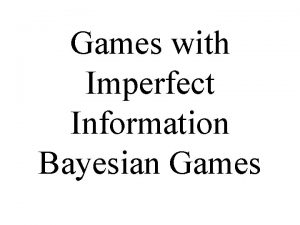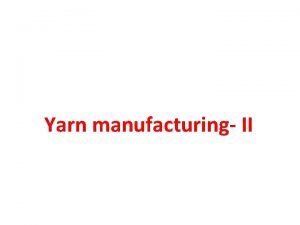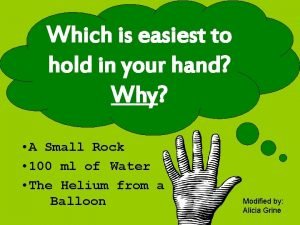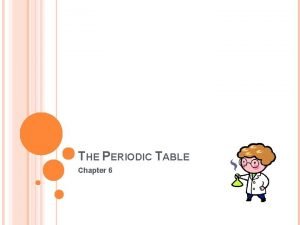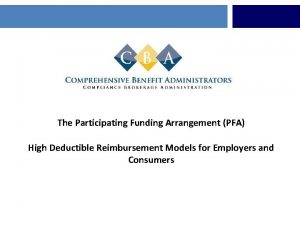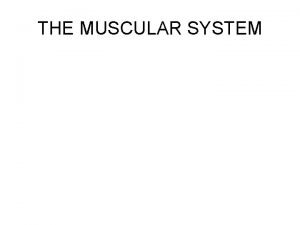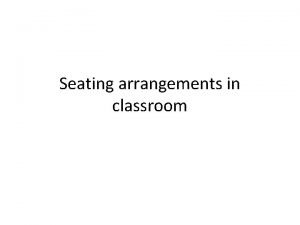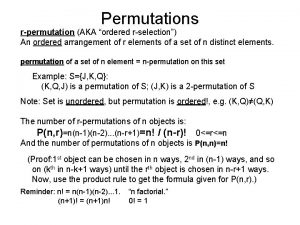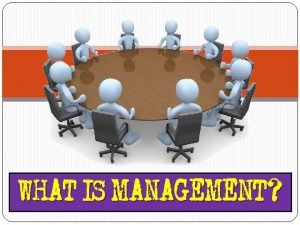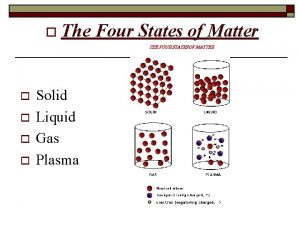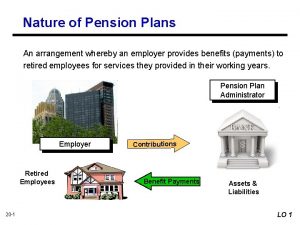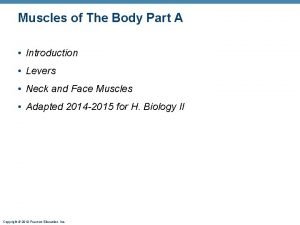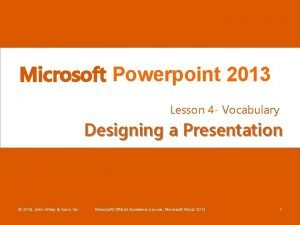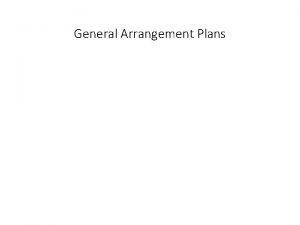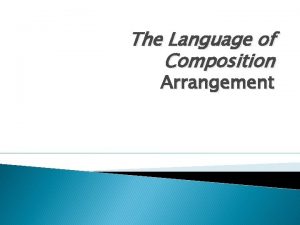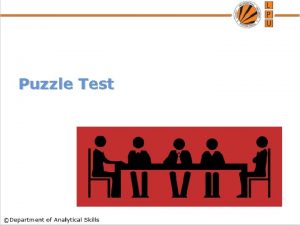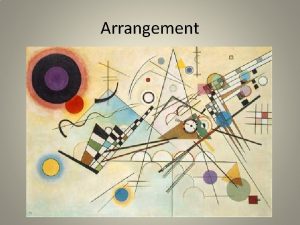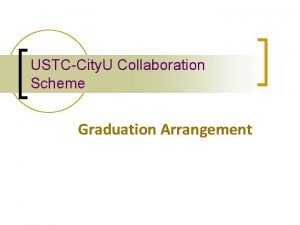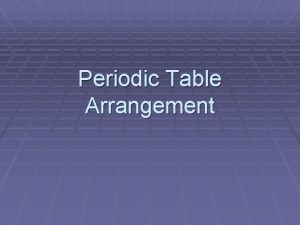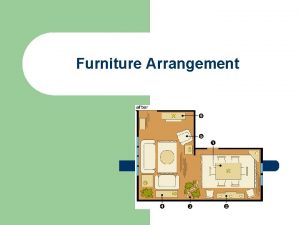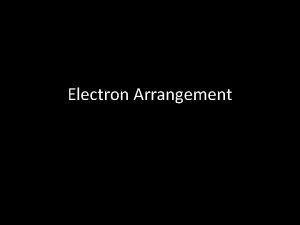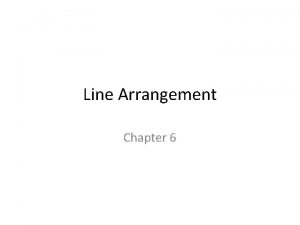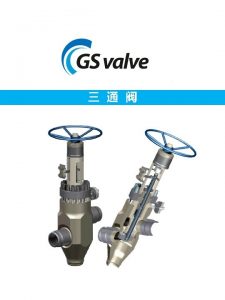An information system IS is an arrangement of







































- Slides: 39

An information system (IS) is an arrangement of people, data, processes, communications, and information technology that interact to support and improve day-to-day operations in a business as well as support the problem-solving and decision making needs of management and users. Information technology is a contemporary term that describes the combination of computer technology (hardware and software) with telecommunications technology (data, image, and voice networks). 1

Front- and Back-Office Information Systems n n Front-office information systems support business functions that reach out to customers (or constituents). q Marketing q Sales q Customer management Back-office information systems support internal business operations and interact with suppliers (of materials, equipment, supplies, and services). q Human resources q Financial management q Manufacturing q Inventory control 2

Information System Resources n People Resources q q End Users – the people who use an information system or the information it produces. Ex: Accountants, salespeople, customers IS Specialists – the people who develop and operate information systems based on the requirements of end users. Ex: programmers, analysts, system operators 3

Information System Resources n Hardware Resources q q q Machines, such as computers and other devices, and media, such as paper, disks Computer Systems such as the personal computer (desktop), mainframe, or laptop Computer peripherals such as keyboard, mouse, monitor, scanner, printer, disks 4

Information System Resources n Software Resources q q Programs – sets of operating instructions that direct and control computer hardware Procedures – sets of information processing instructions that people need 5

Information System Resources n Software Resources continued q q q System Software – such as operating system that supports the operations of a computer system. Ex. Windows 98 Application Software – programs that direct processing for a particular use of computers by end users. Excel Procedures – operating instructions for people who will use an IS. Ex. Instructions for filling out a form. 6

Systems: Some Examples n n University q Inputs: Students, Faculty, Textbooks q Processes: Education/Courses q Output: graduates q Feedback: surveys, grades Toyota Plant q Inputs: raw materials, components q Processes: assembly line q Output: mini-vans q Feedback: customer surveys, quality reports n n Fast Food IS q Inputs: consumer orders q Processes: processing software q Output: receipts, cook’s order list q Feedback: invalid entry message Video Store IS q Inputs: rentals, returns q Processes: processing software q Output: reports, rental agreement q Feedback: error repots 7

Information & Decision Making - EIS Increasing Scope Increasing Detail Strategic DSS Imprecise External Recurring Information Needs MIS Tactical Operational + TPS Operational Activity Precise Internal Raw Data 8

Strategic Planning Decisions n n Decide Organisations Objectives – top down management Plan how to achieve Objectives 1. Long term 2. High levels of Uncertainty and Risk 3. Situations may not be recurring 4. Deals with complex issues Environmental Information Strategic Tactical Summarised Information Operational Activity Raw Data 9

Management Control Decisions n n n Taken within the framework of strategic plans Ensure that resources are obtained and used efficiently and effectively Decisions encompass planning activities e. g. pricing a new product Some Environmental Information Strategic Tactical Summarised Information Operational Activity Raw Data 10

Operations, Tactics, Strategy 11

Decision Levels Decision Level Description Example Type of Information Strategic Competitive advantage, become a market leader. Long-term outlook. New product that will change the industry. External events, rivals, sales, costs quality, trends. Tactical Improving operations without restructuring the company. New tools to cut costs or improve efficiency. Expenses, schedules, sales, models, forecasts. Operations Day-to-day actions to keep the company functioning. Scheduling employees, ordering supplies. Transactions, accounting, human resource management, inventory.

History of the Role of IS 1950 -1960 -1970 Data Processing Management Reporting Electronic Data Processing - TPS Management Information Systems 1970 -1980 Decision Support Systems - Ad hoc Reports 1980 -1990 -2000 Strategic & End User Electronic Commerce End User Computing Exec Info Sys Expert Systems SIS Electronic Business & Commerce -Internetworked E-Business & Commerce 13

Operational-level Systems n Transaction-Processing Systems (TPS) q q Basic business systems Perform daily routine transactions necessary for business functions At the operational level, tasks, resources and goals are predefines and highly structured Generally, five functional categories are identified, as shown in the diagram. 14

15

System Architecture: Transaction Processing System 16

System Example: Payroll System (TPS) 17

What is MIS? n n A Management Information System (MIS) is an organized method of providing past, present and projection information relating to internal operations and external intelligence. It supports the planning, control and operational functions of an organization by furnishing uniform information in the proper timeframe to assist the decision-maker ["MIS Universe", Data Management, Sept 1970] A Management Information System provides managers with information and support for effective decision making and provides feedback on daily operations. 18

Management-level Systems n Management Information Systems (MIS) q q q MIS provide managers with reports and, in some cases, on-line access to the organisations current performance and historical records Typically these systems focus entirely on internal events, providing the information for short-term planning and decision making. MIS summarise and report on the basic operations of the organisation, dependent on the underlying TPS for their data. 19

20

System Description: Management Information Systems MISs are used by managerial employees to support recurring decision making in managing a function or the entire business Supported Activities • Scheduled Reporting - the system produces automatically based on a predetermined schedule. Some include: • Key Indicator – High-level summaries to monitor performance (e. g. Monthly Sales Report) • Exception – Highlights situations where data is out of normal range (e. g. Monthly Late Shipments) • Drill Down – Provides lower level detail aggregated in a summary report (printed only if needed) • Ad Hoc Reporting – unscheduled reports that are usually custom built to answer a specific question (e. g. sales data by person report to identify issues) 21

Scheduled Report Example Daily Sales Detail Report Prepared: 08/10/xx Order # Customer ID Sales Rep ID Ship Date Quantity Item # Amount P 12453 C 89321 CAR 08/12/96 144 P 1234 $3, 214 P 12453 C 89321 CAR 08/12/96 288 P 3214 $5, 660 P 12453 C 03214 GWA 08/13/96 12 P 4902 $1, 224 P 12455 C 52313 SAK 08/12/96 24 P 4012 $2, 448 P 12456 C 34123 JMW 08 J/13/96 144 P 3214 $720

Key Indicator Report Example Daily Sales Key Indicator Report This Month Last Year Total Orders Month to Date $1, 808 $1, 694 $1, 014 Forecasted Sales for the Month $2, 406 $2, 224 $2, 608

Demand Report Example Daily Sales by Sales Rep Summary Report Prepared: 08/10/xx Sales Rep ID Amount CAR $42, 345 GWA $38, 950 SAK $22, 100 JWN $12, 350

Exception Report Example Daily Sales Exception Report – ORDERS OVER $10, 000 Prepared: 08/10/xx Order # Customer ID Sales Rep ID Ship Date Quantity Item # Amount P 12453 C 89321 CAR 08/12/96 144 P 1234 $13, 214 P 12453 C 89321 CAR 08/12/96 288 P 3214 $15, 660 P 12453 C 03214 GWA 08/13/96 12 P 4902 $11, 224 … … … …

Outputs of a Management Information System Earnings by Quarter (Millions) Actual Drill Down Reports Provide detailed data about a situation. Forecast Variance 2 ND Qtr 1999 $12. 6 $11. 8 6. 8% 1 st Qtr 1999 $10. 8 $10. 7 0. 9% 4 th Qtr 1998 $14. 3 $14. 5 -1. 4% 3 rd Qtr 1998 $12. 8 $13. 3 -3. 0%

Management Information System (MIS) n n Inputs: Summary transaction data Processing: Simple models; low level analysis Outputs: Summary reports Users: Middle managers Example: Weekly, monthly, and annual resource allocation. Not five year plans and not daily details, but something in between. 27

System Architecture: Management Information System 28

Guidelines for Developing MIS reports Guideline Explanation Tailor each report to user needs Involve user in the design Produce only needed reports If no one reads the report, do not produce it Pay attention to report content and layout Display the information most desired Use user accepted words and phrases Do not use unnecessary data Use management by exception in reporting Produce reports to solve a problem or take action Set parameters carefully Low parameters may result in too many reports, while high parameters may overlook valuable information Produce all reports in a timely fashion Outdated reports are of little or no value 29

System Description: Functional Area Info Systems Functional Area Information Systems Cross-organizational information systems are designed to support a specific functional area Supported Activities The following functional organizations have systems to support their operational and managerial activities • Accounting • Finance • Human Resources • Marketing • Operations 30

31

Overview of a Marketing MIS 32

Overview of a Financial MIS 33

Manufacturing MIS n n n Material requirements planning (MRP) Manufacturing resource planning (MRPII) Just in time (JIT) inventory system 34

Overview of a Manufacturing MIS 35

Human Resource MIS Concerned with activities related to employees and potential employees of the organization. n Subsystems include: q q q needs and planning assessments recruiting training and skills development scheduling and assignment employee benefits 36

Overview of a Human Resource MIS 37

Information Systems in Industry n Airline industry (e. g. , ticketing sites) n Investment firms (e. g. , analyze stocks and bonds) n Banks (e. g. , online check payment) n Transportation industry (e. g. , schedule trucks and trains) 38

Information Systems in Industry n Healthcare organizations (e. g. , track patient records) n Retail companies (e. g. , process customer orders) n Power management and utility companies (e. g. , monitor and control power generation and usage) n Professional services (e. g. , provide information on products and services to its consultants) 39
 Arrangement of information
Arrangement of information System for arrangement
System for arrangement Imperfect vs incomplete information
Imperfect vs incomplete information Closed open and isolated systems
Closed open and isolated systems Digestive respiratory and circulatory system
Digestive respiratory and circulatory system Objective of draw frame
Objective of draw frame Solid+heat
Solid+heat Particle shape in micromeritics
Particle shape in micromeritics Triangular arrangement
Triangular arrangement How electrons are arranged in an atom
How electrons are arranged in an atom Compare and contrast conclusion example
Compare and contrast conclusion example It is a consistent orderly or pleasing arrangement of parts
It is a consistent orderly or pleasing arrangement of parts Periodic table arrangement
Periodic table arrangement Participating funding arrangement
Participating funding arrangement Rectus femoris fascicle arrangement
Rectus femoris fascicle arrangement Ancient egypt floral design
Ancient egypt floral design Learning objectives of flowers
Learning objectives of flowers Structure arrangement
Structure arrangement It is the arrangement of something into different groups
It is the arrangement of something into different groups Classroom arrangements
Classroom arrangements Batch management in sap mm
Batch management in sap mm The arrangement of opposite elements (ex. light vs. dark)
The arrangement of opposite elements (ex. light vs. dark) An ordered arrangement
An ordered arrangement Effectiveness and efficiency example
Effectiveness and efficiency example Flowers together
Flowers together Solid
Solid Accuaries
Accuaries Lever arrangement
Lever arrangement A predefined arrangement of placeholders
A predefined arrangement of placeholders Quota arrangement in sap mm
Quota arrangement in sap mm Internal leaf diagram
Internal leaf diagram Maple leaf arrangement
Maple leaf arrangement Occidental style
Occidental style Grass inflorescence types
Grass inflorescence types Pseudomonas aeruginosa arrangement
Pseudomonas aeruginosa arrangement Vessel ga plan
Vessel ga plan Plating arrangement
Plating arrangement Hierarchy of f&b department
Hierarchy of f&b department Hibiscus inflorescence type
Hibiscus inflorescence type Repetition in floral design
Repetition in floral design


